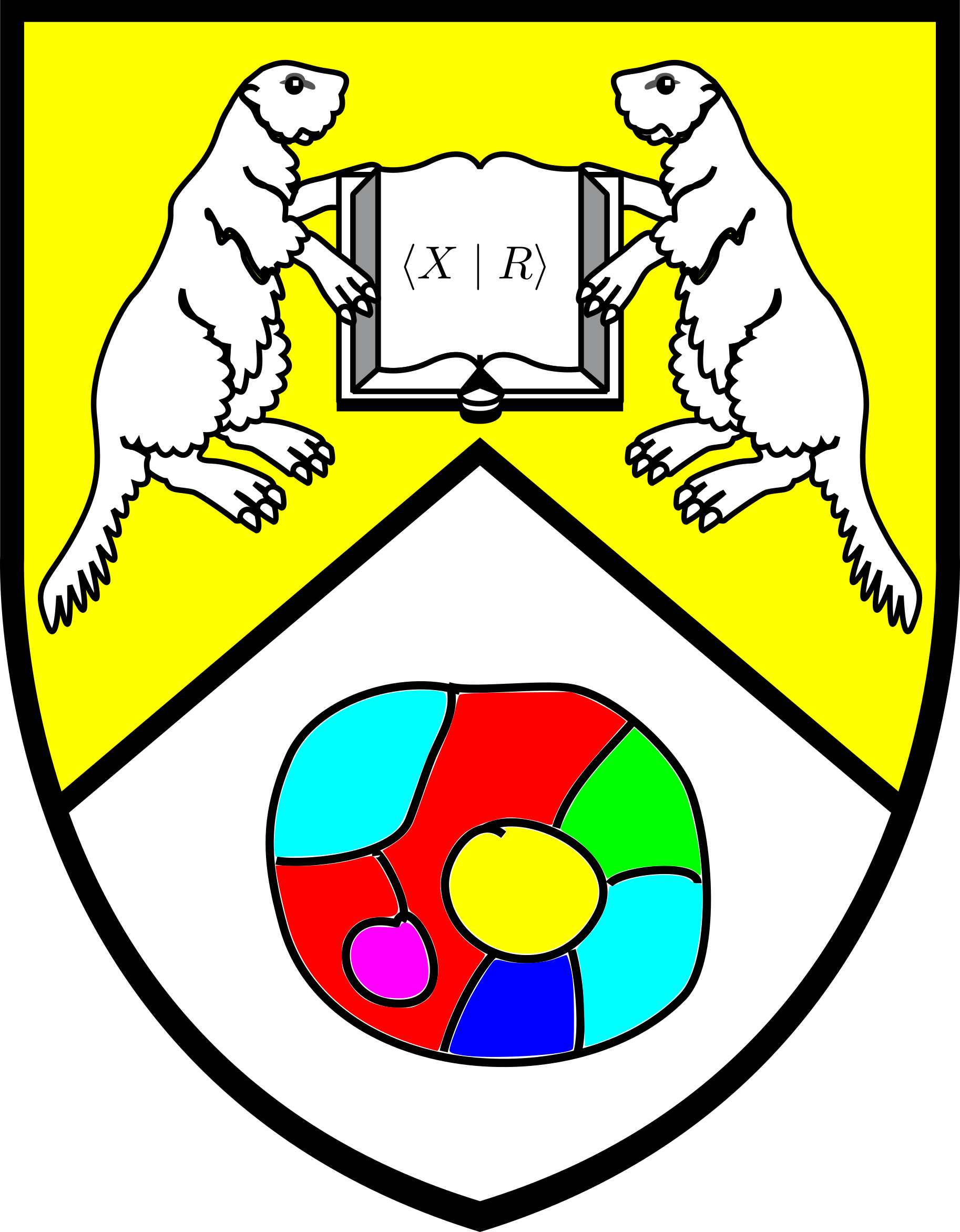An introduction to combinatorial and geometric group theory
Introduction
This course is meant to be a fully self-contained introduction to combinatorial and geometric group theory, building only off the axioms of group theory.
Although the reader is expected to know what a string of symbols or a graph is and to use some arguments use intuitive topology, no in-depth knowledge is assumed and this text was written to be accessible to an incoming graduate student, or an advanced undergraduate with some exposure to algebra, analysis, and proofs. The goal of this course is to prepare and motivate a student to study word (or Gromov) hyperbolic groups.
The first part of the course gives a rigourous construction of the free group, which in turn leads to group presentations: a way to identify any group as a string of symbols from some alphabet subject equipped with rewriting rules. Although this gives a unified framework in which to study groups, it turns out that it is impossible in general to decide if two words represetning group elements in some group given by a presentation are equal, or whether two group presentations actually define isomorphic groups. In general there is no canonical presentation for a given group.
The second part presents a basic concept fo geometric group theory: every choice of generating set for a group, makes the group into a metric space, realized by a Cayley graph. Although in this way a group will admit different metrics, they will all be quasi-isometric. In this way, although a group has no canonical presentation or generating set, we can canonically associate to it a quasi isometry class. We give an example of how to show that two groups are not quasi-isometric and therefore non-isomorphic. We also explore the limitations of quasi-isometry, in particular by showing that quasi-isometry cannot distinguish virtually isomorphic groups. We end the section by showing that a group is two two ended if and only if it is virtually isomorphic to \(\ZZ\text{,}\) thus illustrating that it is possible to recover algebraic information about a group from purely metric information.
Third and final part returns to groups given by presentations. We introduce van Kampen's Lemma, which tells us how 2-complexes (2-dimensional generalizations of graphs) can be used to describe non trivial words representing the identity. Using intuitive planar topological arguments we deduce structural results about HNN extensions. We then present the Combinatorial Gauss-Bonnet Theorem and turn our study to group presentations satisfying the \(C'(1/6)\) small cancellation condition. We show that group presentations that satisfy this property admit a fast solution to the word problem. Thus, although in general there is no method to solve the word problem given an arbitrary group presentations, if one writes out a "random" presentation, then with high probability this presentation will be \(C'(1/6)\) and will admit a very simple algorithm which properly solves the word problem.
Unfortunately altough a group may admit a \(C'(1/6)\) group presentation, it will also admit many, many other presentations that do not satisfy this property. Furthermore there is no method to decide whether a group has such a presentation. Presentations are not canonical. In the epilogue, we introduce \(\delta\)-hyperbolicity which is a property that, similarly to small cancellation, enables us to solve the word problem, but which is robust under quasi-isometries.
From here the student will be able to consult understand many of the excellent introductions to hyperbolic groups.
